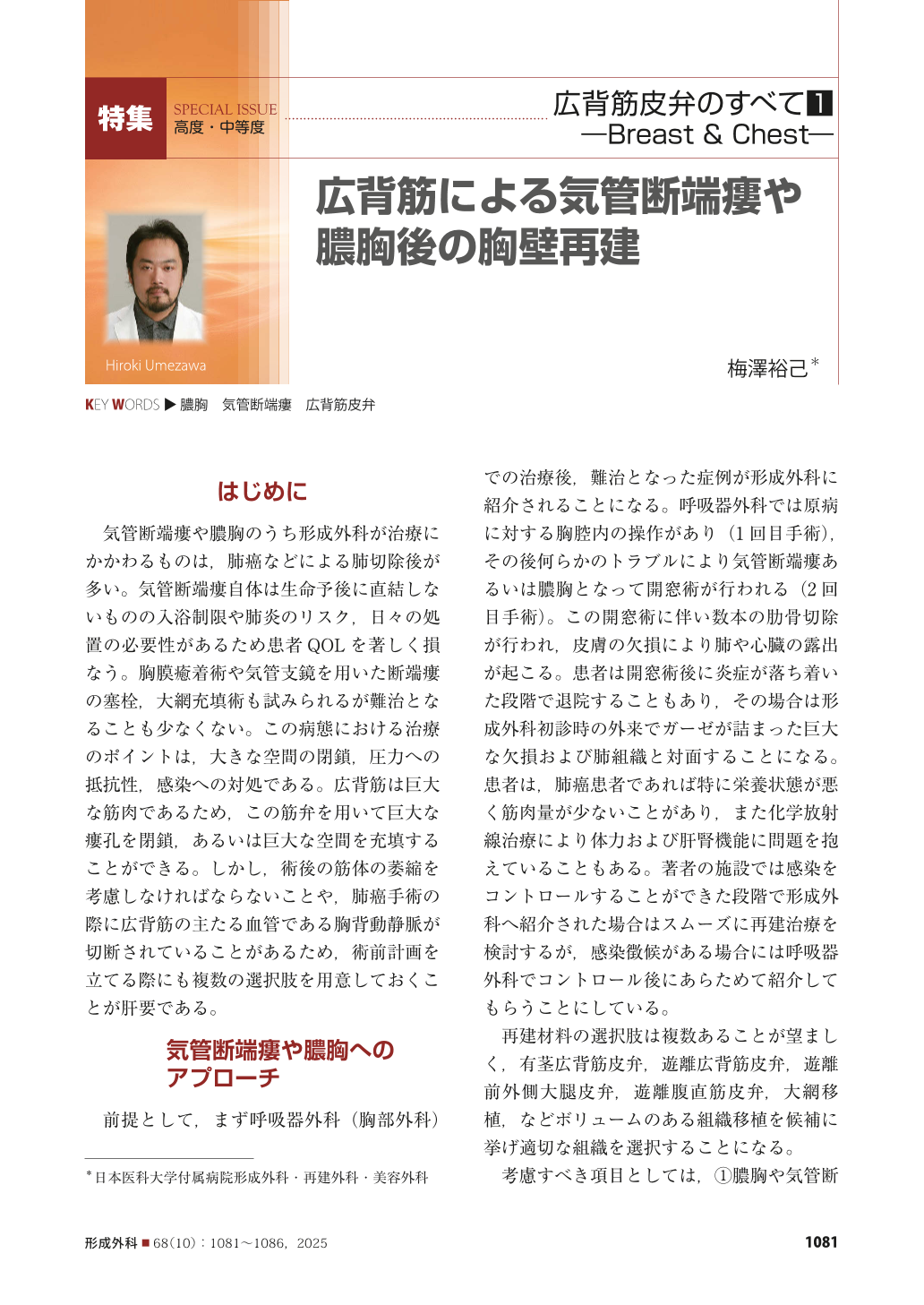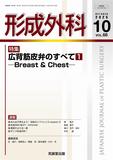Japanese
English
- 有料閲覧
- Abstract 文献概要
- 1ページ目 Look Inside
- 参考文献 Reference
はじめに
気管断端瘻や膿胸のうち形成外科が治療にかかわるものは,肺癌などによる肺切除後が多い。気管断端瘻自体は生命予後に直結しないものの入浴制限や肺炎のリスク,日々の処置の必要性があるため患者QOLを著しく損なう。胸膜癒着術や気管支鏡を用いた断端瘻の塞栓,大網充填術も試みられるが難治となることも少なくない。この病態における治療のポイントは,大きな空間の閉鎖,圧力への抵抗性,感染への対処である。広背筋は巨大な筋肉であるため,この筋弁を用いて巨大な瘻孔を閉鎖,あるいは巨大な空間を充填することができる。しかし,術後の筋体の萎縮を考慮しなければならないことや,肺癌手術の際に広背筋の主たる血管である胸背動静脈が切断されていることがあるため,術前計画を立てる際にも複数の選択肢を用意しておくことが肝要である。
In the treatment of empyema and tracheal stump fistulas, it is necessary to select appropriate reconstruction materials and methods based on factors such as the location of the defect to be filled, the impact of previous thoracic surgery, the presence of infection, and the patientʼs overall condition and nutritional status. Collaboration with thoracic surgeons and discussions with anesthesiologists are also crucial. Successful treatment outcomes depend on the smooth execution of all aspects, including general anesthesia with lung isolation ventilation, preoperative and intraoperative bronchoscopy, and the patientʼs gentle emergence from anesthesia.
Since the latissimus dorsi muscle is large and easily located, it is often the first choice for reconstruction. However, relying too much on this muscle may lead to insufficient treatment and suboptimal results. Pedicled and free flaps should be used without hesitation, and in some cases, the use of two flaps should also be considered when the surgery is being planned.
When securing the flap (especially in cases involving a tracheal stump fistula), it is essential to use a method that allows air to escape, in order to flexibly accommodate postoperative pressure changes.

Copyright© 2025 KOKUSEIDO CO., LTD. All Rights Reserved.


